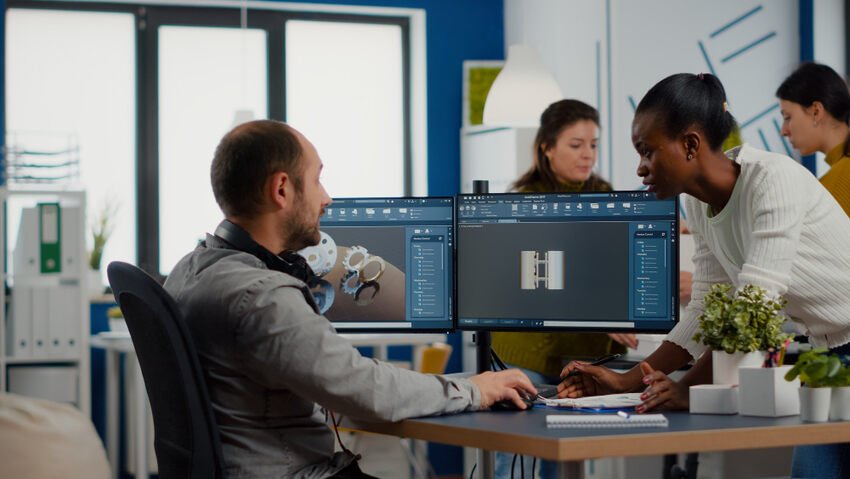Have you ever stopped to think about how many tasks you no longer have to do yourself? From ordering groceries with a voice assistant to scheduling appointments online, automation has quietly become part of our daily lives. It’s everywhere—from our homes and workplaces to the way we communicate and stay organized. What used to take hours can now happen with just a tap or voice command. This shift is changing how we live, work, and interact with the world around us.
In this blog, we will share how automation is rising in everyday tasks and what it means for you.
Smart Homes: Automation at Your Fingertips
Home automation is becoming more common thanks to smart devices. With voice assistants like Alexa and Google Home, people can control lights, thermostats, and even coffee makers without getting up. These devices learn habits and adjust automatically, such as lowering the temperature at night or turning on porch lights at sunset. It’s all designed to save time and add comfort to everyday life.
Even appliances have gotten smarter. Many fridges can track grocery items and send alerts when you’re running low. Washing machines can start on a schedule, and robotic vacuums can clean while you’re out. These features make homes feel more efficient and easier to manage. As more people use these tools, automation will become a standard part of modern living.
Cleaning Services Get a Digital Upgrade
The cleaning industry is also feeling the effects of automation. Many cleaning businesses now rely on specialized tools to organize their operations. A good example is a cleaning service software, which helps companies schedule jobs, manage staff and communicate with clients in real-time. These tools help reduce mistakes and save hours of manual planning.
ResortCleaning is one platform that stands out. It offers features like automated checklists, live job tracking, and staff scheduling. For vacation rental managers and cleaning teams, it keeps things running smoothly. It also allows updates on room status and housekeeping progress to be shared instantly. This improves reliability and saves time for everyone involved.
Grocery Shopping Without the Hassle
Going to the store used to be a weekly task for most families. But now, grocery delivery apps have changed that routine. With a few taps on your phone, you can order food and have it delivered to your door within hours. Many stores even offer same-day delivery and options to repeat past orders, making shopping faster and easier.
Automation also plays a role in how your order is processed. Stores use robots and smart systems to collect items from shelves and package them. This reduces wait times and improves accuracy. For people with busy schedules, online grocery shopping is a game-changer. It helps save time while still making sure you get what you need.
Transportation Is Getting Smarter
Transportation has seen big changes thanks to automation. Rideshare services like Uber and Lyft use smart systems to match drivers with riders quickly. Some services even let you schedule rides in advance or track your driver in real-time. These features are powered by algorithms that keep things moving efficiently.
Electric and self-driving cars are also part of this trend. While fully autonomous vehicles are still being tested, many new cars already have features like lane assist and smart cruise control. These tools help drivers stay safe and make driving less stressful. In the future, commuting could be more about monitoring than driving yourself, freeing up time for other tasks.
Healthcare Goes High-Tech
Healthcare has embraced automation in many ways. One major change is online appointment booking. Patients no longer need to call the office—they can schedule, reschedule, or cancel visits with just a few clicks. Reminders are also sent by text or email, reducing missed appointments and saving staff time.
Medical records have gone digital, too. Doctors can now access patient histories instantly and share updates with specialists. In hospitals, robots assist with tasks like delivering supplies or cleaning rooms. Some even help with surgeries under the guidance of doctors. These tools help healthcare workers focus more on patient care and less on routine tasks.
Managing Money Has Never Been Easier
Banking is one of the most automated areas of daily life. Many people no longer visit a bank in person. Mobile apps let you deposit checks, transfer money, or pay bills at any time. Some apps even track spending habits and offer advice to help users save money.
Automation is also changing how we budget. Tools like auto-pay for bills and automatic savings plans help people stay on top of their finances. You can set goals in the app and have small amounts moved to savings each month without even thinking about it. These small changes can lead to better money habits and reduced stress.
Work and Office Life Are Changing
Many workplaces have turned to automation to boost productivity. Office tools like calendar assistants, email filters, and auto-generated reports save time. Instead of spending hours on tasks like scheduling or data entry, employees can focus on higher-level work. This improves job satisfaction and helps companies work more efficiently.
Even meetings are changing. Some tools now transcribe discussions in real time or create summaries afterward. Project management platforms track deadlines and progress automatically. With remote work becoming more common, automation helps teams stay organized and connected. It’s clear that the modern office is becoming more digital every day.
Entertainment and Leisure at a Tap
Entertainment has also become more automated. Streaming services like Netflix or Spotify suggest content based on your past choices. These systems use algorithms to figure out what you might enjoy next, saving time searching for something to watch or listen to. It creates a more personalized experience without any extra effort.
Games and social media apps now offer tailored content too. Whether it’s showing the most liked posts or suggesting new games, automation shapes what you see. It helps users discover new interests and stay engaged. As these platforms grow smarter, they make relaxing or having fun easier and more enjoyable.
In conclusion, automation is now part of nearly every part of our lives. Whether it’s making breakfast with a smart coffee maker, booking a ride, or receiving a delivery, things just happen more easily than before. While some worry about job loss, it’s also true that automation opens doors to new ways of living and working. It gives us more time, better tools, and smarter solutions for daily problems.
Read Dive is a leading technology blog focusing on different domains like Blockchain, AI, Chatbot, Fintech, Health Tech, Software Development and Testing. For guest blogging, please feel free to contact at readdive@gmail.com.





